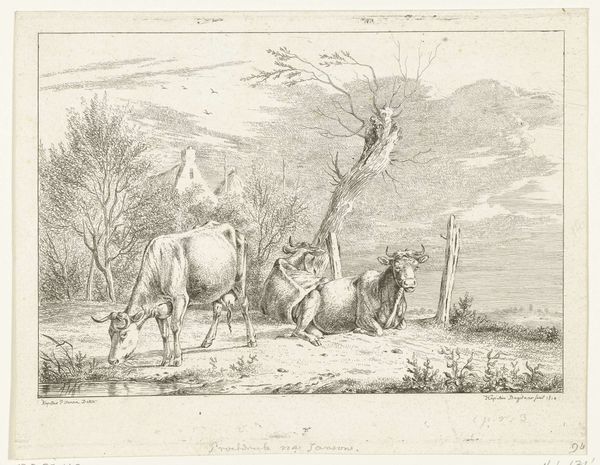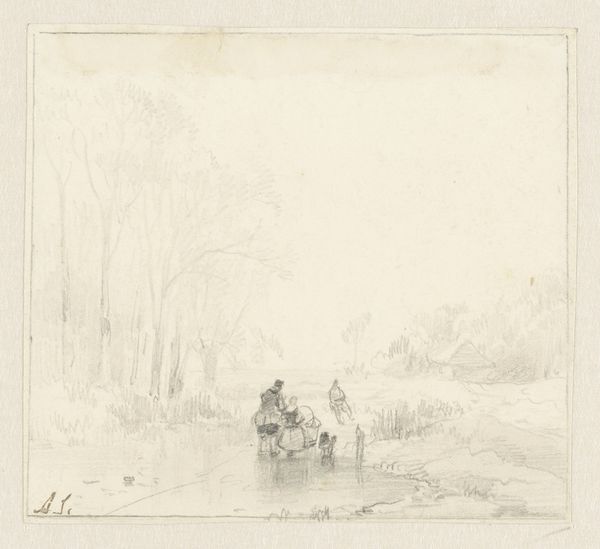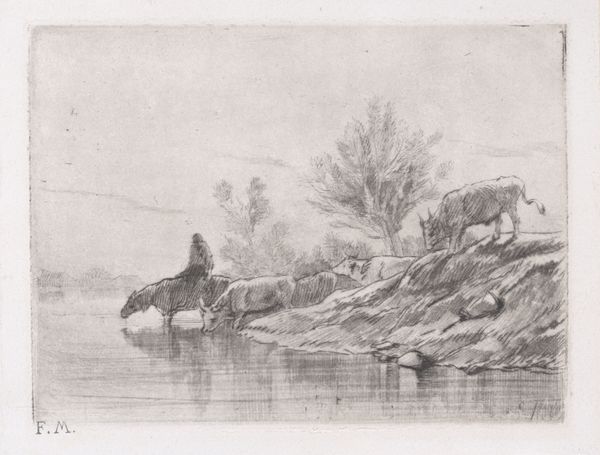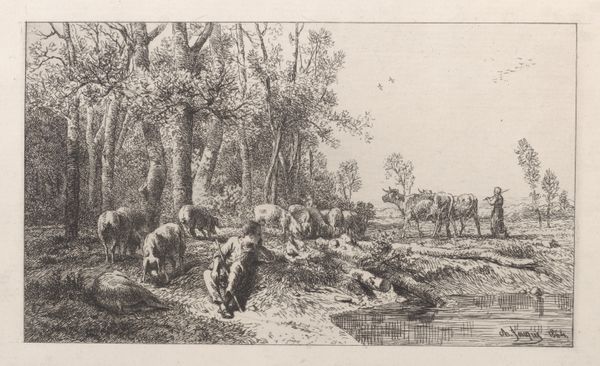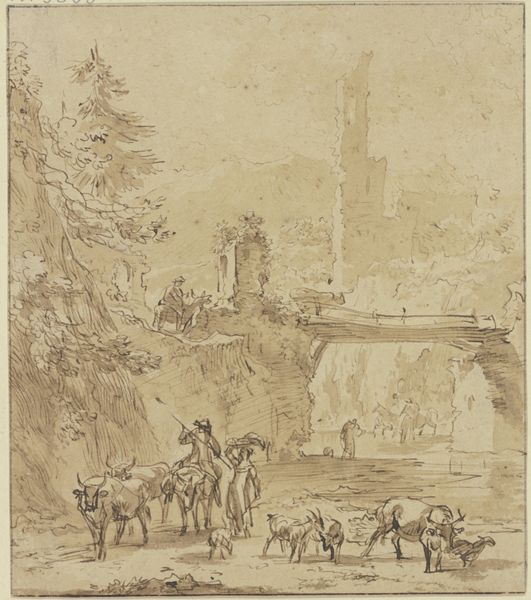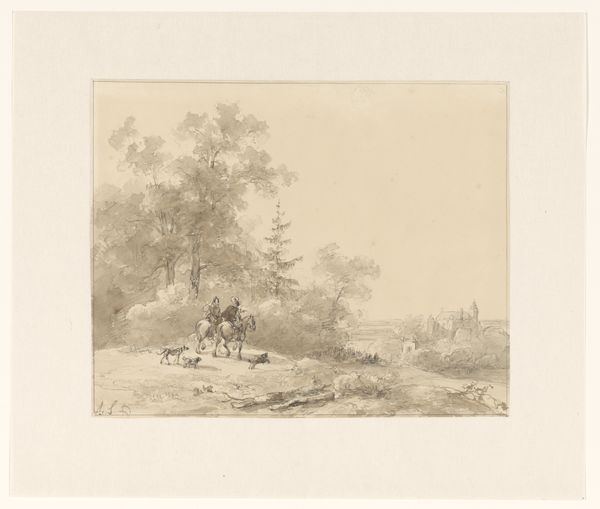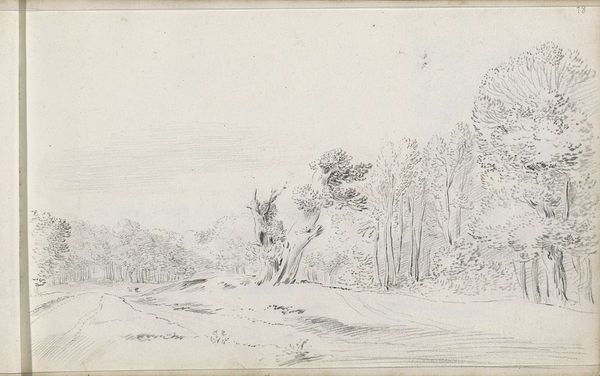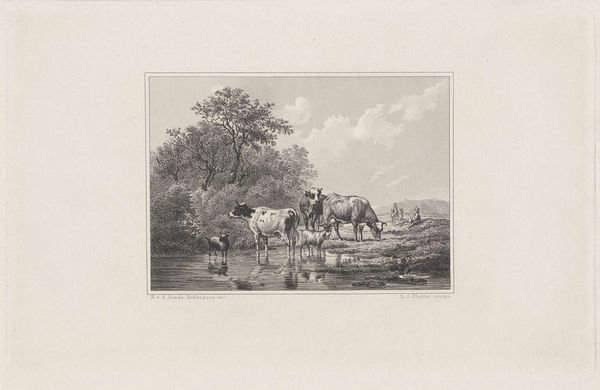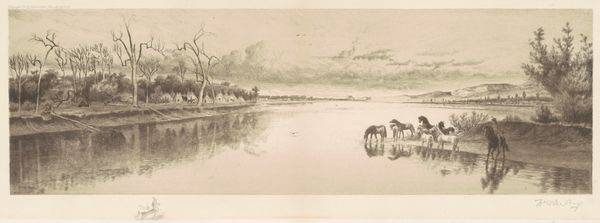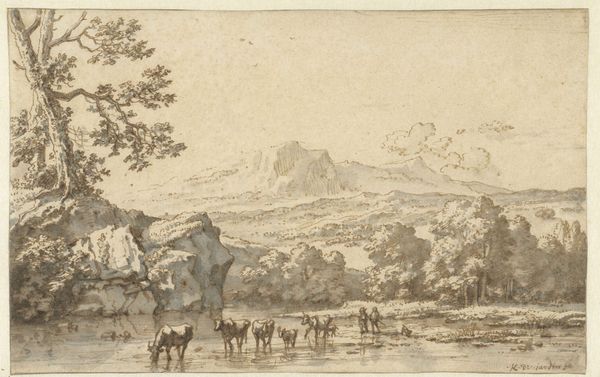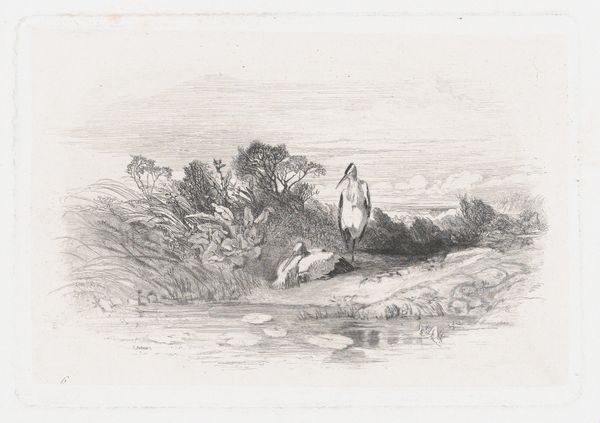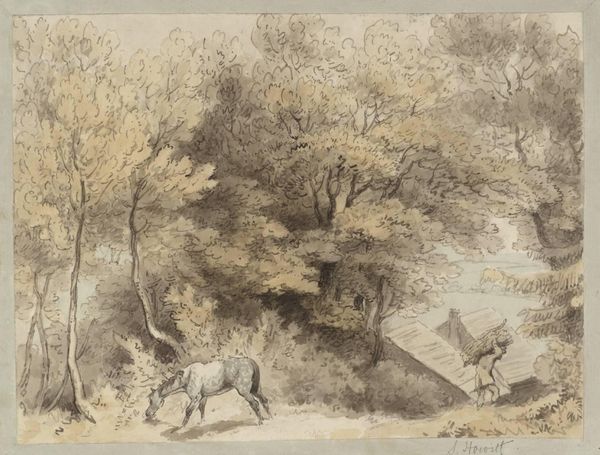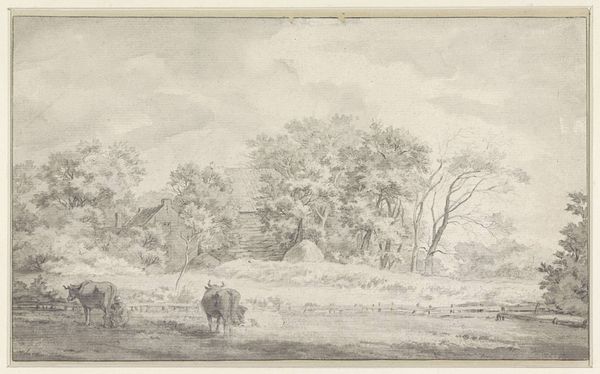
Dimensions: height 220 mm, width 265 mm
Copyright: Rijks Museum: Open Domain
Editor: This is "Woman on Donkey with her Herd," a pencil drawing made sometime between 1822 and 1891 by Simon van den Berg. It’s incredibly detailed for a pencil work! The woman and her animals crossing the water look so peaceful. What can you tell me about it? Curator: Looking at van den Berg's meticulous rendering, particularly the textures of the animals' coats and the play of light on the water, forces us to consider drawing not merely as a sketch, but a laborious craft. Note the landscape, it has picturesque ruin, so popular then. This is no quick sketch done en plein air. Editor: I see what you mean about labor. The precision seems almost photographic, yet it’s entirely hand-drawn. Does this level of detail relate to its purpose? Curator: Precisely! Van den Berg's "Woman on Donkey" participates in a broader dialogue around artistic production of the era. The market for prints was growing and works on paper become more collectible than previously, driving artists towards more skilled labor. Editor: So, you are saying that even though it looks like a simple rural scene, its meticulous craftsmanship points to the rising demand of art ownership. Curator: Exactly. How does knowing this change how you look at the artwork, seeing this interplay between pastoral subject and capitalist incentive? It asks, What is being represented, the labour, the process or the subject. Editor: That definitely gives me a new perspective! It's easy to get lost in the romantic imagery and overlook the economic forces driving its creation. Curator: Absolutely, considering these dynamics reveals the true materiality and the economic underpinnings that shapes so many landscapes. Editor: Thanks! Now I’m more aware that the artistic choices may reflect economical backgrounds. Curator: Indeed. Recognizing how economics affected van den Berg's art helps us to appreciate how context shapes the very fabric of an artwork.
Comments
No comments
Be the first to comment and join the conversation on the ultimate creative platform.
